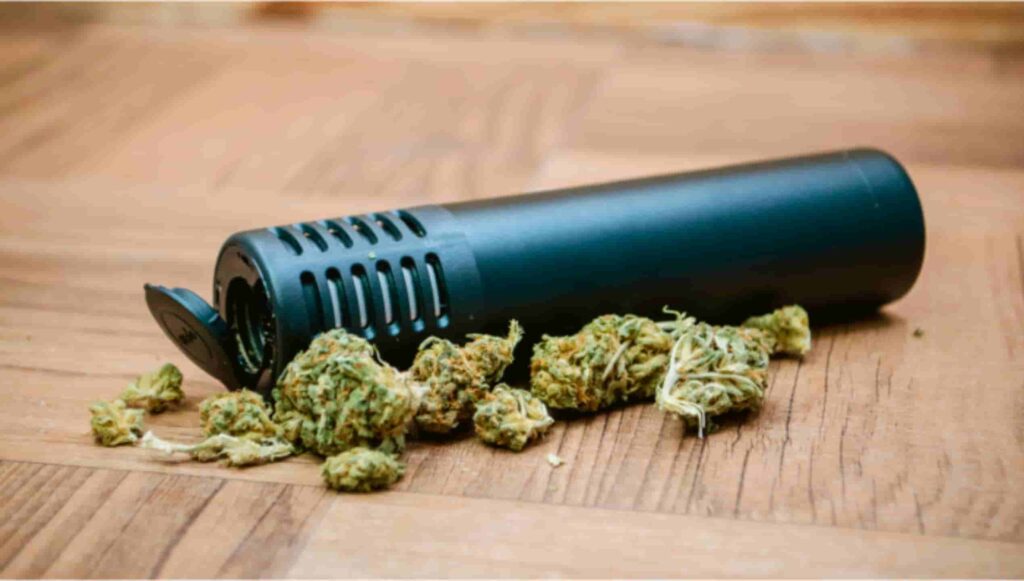Exploring Dry-Vaping Medical Marijuana: Pros and Cons
In recent years, the landscape of medical marijuana consumption has undergone a significant transformation, with dry vaping emerging as a popular alternative to traditional methods. As individuals seek more discreet and efficient ways to manage their medical conditions, dry vaping has garnered attention for its potential benefits. However, like any method of cannabis consumption, it comes with its own set of advantages and disadvantages. Unlike vape cartridge pens, which involve vaporizing an oil made with cannabis extract, dry vaping involves heating raw cannabis flower and inhaling the vapor produced directly from the plant. In this article, we’ll delve into the world of dry-vaping medical marijuana, exploring both sides of the coin to help you make an informed decision.
The Pros of Dry-Vaping Medical Marijuana
- Healthier Alternative to Smoking: One of the primary advantages of dry-vaping medical marijuana is that it offers a healthier alternative to smoking. Traditional smoking involves inhaling combusted plant material, which can release harmful toxins and carcinogens. Dry-vaping, on the other hand, heats the cannabis at lower temperatures, producing a vapor that contains fewer harmful substances, making it a more lung-friendly option.
- Precise Dosage Control: Dry-vaping provides users with a level of precision in dosage that is often challenging to achieve with other methods. Many dry-vaporizer devices allow users to control the temperature, giving them the ability to release specific compounds and cannabinoids at desired levels. This precision is especially beneficial for medical marijuana patients who require consistent and accurate dosing for symptom management.
- Reduced Odor: Another notable advantage of dry vaping is the reduced odor compared to smoking. Vapor dissipates more quickly than smoke and is less likely to cling to clothing or furniture. This makes dry vaping a discreet option for individuals who may need to use medical marijuana in social or public settings without drawing unwanted attention.
- Preservation of Terpenes: Terpenes are aromatic compounds found in cannabis that contribute to its distinct flavors and potential therapeutic effects. Unlike smoking, dry vaping preserves these terpenes, enhancing the overall sensory experience and potentially boosting the therapeutic benefits of the medical marijuana being consumed.
- Convenience and Portability: Dry-vaporizer devices are often compact and portable, offering medical marijuana patients the convenience of on-the-go use. The ease of use and portability make dry vaping a practical choice for those who need immediate relief from their symptoms, regardless of their location.
The Cons of Dry-Vaping Medical Marijuana
- Initial Cost: One of the main drawbacks of dry vaping is the upfront cost of acquiring a quality vaporizer device. While prices vary, investing in a reliable dry vaporizer may seem steep initially. However, many argue that the long-term benefits, both health-wise and in terms of efficiency, may outweigh the initial expense.
- Learning Curve: For individuals new to dry vaping, there can be a learning curve associated with using the devices effectively. Learning how to properly load the vaporizer, adjust temperature settings, and maintain the equipment can be intimidating initially. However, with a bit of patience and guidance, users can quickly adapt to the process.
- Device Maintenance: Unlike traditional smoking methods, dry-vaporizer devices require regular maintenance to ensure optimal performance. Cleaning and maintaining the device can be more involved than simply rolling a joint or packing a bowl. Neglecting proper maintenance may result in decreased efficiency and an overall less satisfying vaping experience.
- Battery Life and Charging: Many dry-vaporizer devices rely on batteries, and their performance can be affected by factors such as age and frequency of use. Some users may find it inconvenient to deal with recharging the device regularly, especially when needing relief in unexpected situations. This dependency on battery life adds an extra layer of consideration for potential users.
- Limited Availability of Strains: The selection of strains available for dry vaping may be more limited compared to other consumption methods, particularly in regions where marijuana use is restricted. Some medical marijuana patients may find that their preferred strains are not as readily available in a form suitable for dry vaping.
Conclusion
In the evolving landscape of medical marijuana consumption, dry vaping has emerged as a promising alternative with its own set of advantages and disadvantages. For individuals seeking a healthier option with precise dosage control, reduced odor, and enhanced portability, dry vaping may be an appealing choice. However, the initial cost, learning curve, device maintenance, battery considerations, and limited strain availability should also be weighed when making a decision.
Ultimately, the choice between dry vaping and other consumption methods boils down to personal preferences, medical needs, and lifestyle. As with any medical treatment, individuals should consult with healthcare professionals to determine the most suitable method for managing their conditions. Whether you’re a seasoned cannabis enthusiast or a medical marijuana patient exploring new options, understanding the nuances of dry vaping can empower you to make informed decisions about your health and well-being.

Dr. Nicholas Marsh has been a respected board-certified anesthesiologist in Northern Virginia for over 35 years. Recognized as a top doctor by FindaTopDoc.com, his vision for providing top-quality medical services is driven by his passion for patient comfort and dignity.

